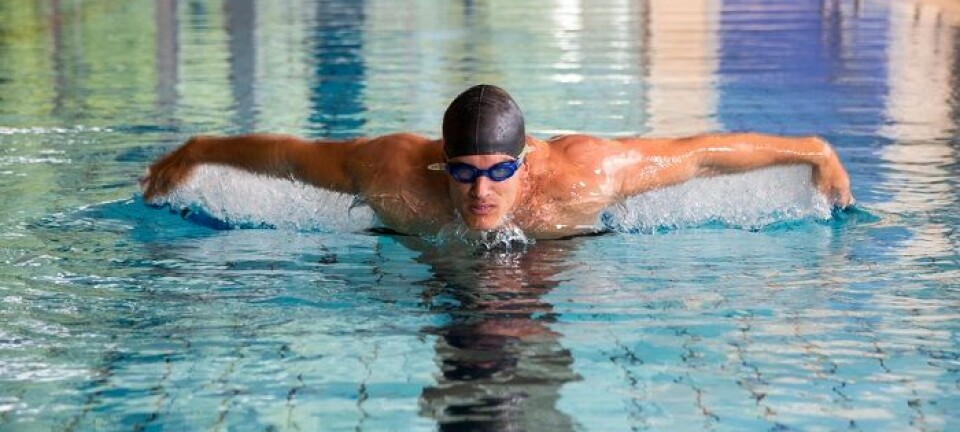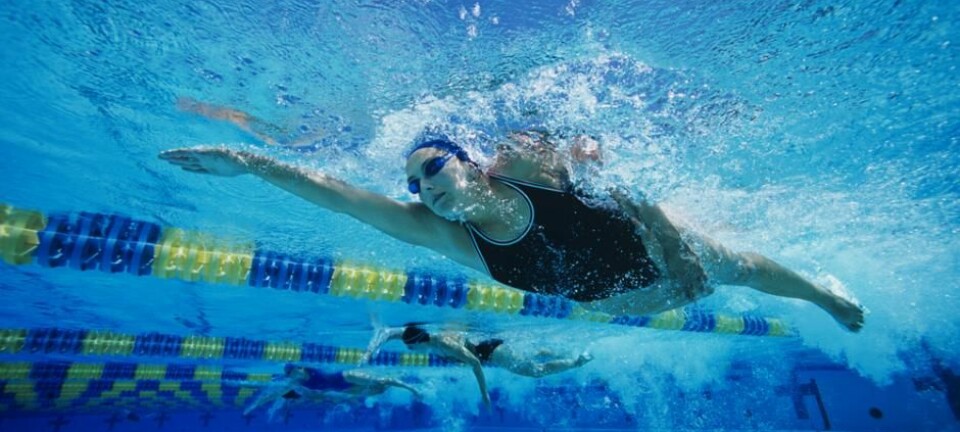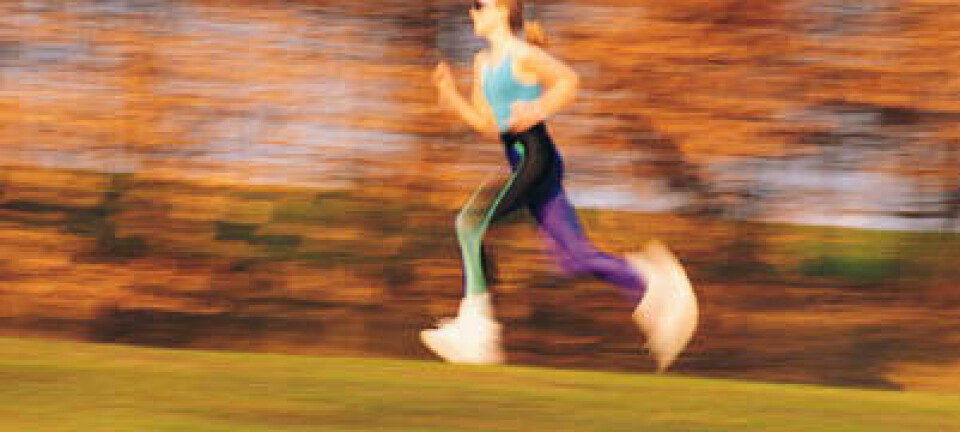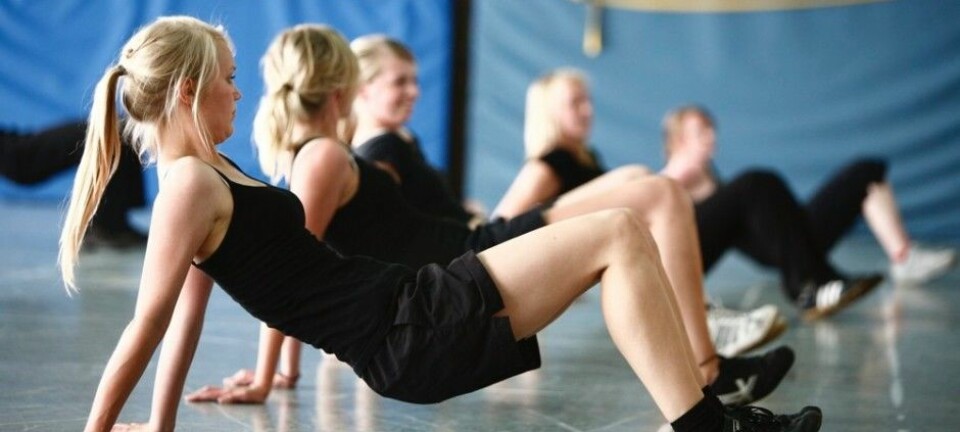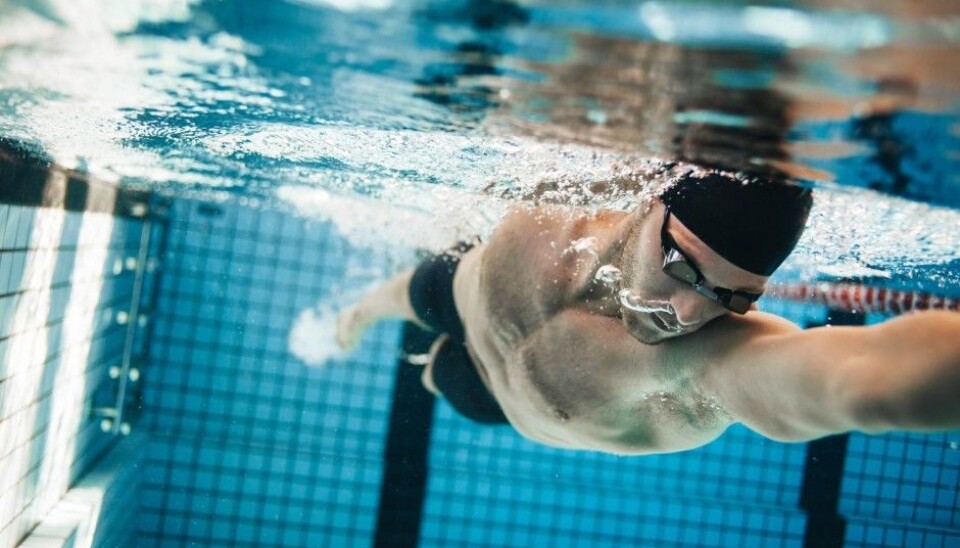
Getting in shape by swimming
Researcher and swimmer Bjørn Harald Olstad has some tips to take to the water and get in better shape.
When it comes to getting in shape, water sports may not be the first activity that comes to mind. Some people sign up for a gym, others start jogging. But for people who have bad knees or find the idea of running or lifting weights tedious, Bjørn Harald Olstad has a message for you: swimming is good training.
Olstad teaches swimming at the Norwegian School of Sport Sciences, and studies swimming and water activities from the beginning to the elite level. He says that it can be as effective for people to get in shape in the water as on land.
“It may in fact be more effective. However, there is some technique in swimming, and if you have not swum before, you can easily exhaust yourself quite quickly. You have to start gradually and work a bit with your technique, so you'll be able to swim longer sessions without stopping. You’ll also get much more out of the training this way,” he said.
Olstad says that swimming works many different muscles in a gentle way.
“It's an activity that works the whole body: arms, legs and not least core muscles, belly and back,” he said.
Swim intervals
Olstad recommends swimming intervals if you want to get in shape quickly.
“Interval training is used a great deal in swimming, and really by all endurance athletes to get in shape quickly,” he said.
Depending on your level, you can start to swim fast intervals of 50-100 metres, then take a shorter break of 20-60 seconds at the pool’s edge.
"The most important thing is to think about progression. This is about not starting too hard right away. If you swim breaststroke, you may want to take 1-2 minutes to cover 50 metres, because this is a rather slow type of stroke,” he said.
Olstad said the common land-based 4-x-4 interval training, where four sessions of 4 minutes of hard exercise each are interspersed with 2-3 minutes of less intensive training, is not so common in swimming.
“In swimming, you often use shorter intervals to make sure your technique remains strong, and you take shorter breaks since there is not nearly so much strain on your joints,” says Olstad. Your heart rate also won’t climb nearly as high in the water as it would on land, he said.
"In swimming, you’re also in a horizontal position, which is more favourable for the heart, and the amount of blood that is pumped out of the heart with each beat is quite high,” he said.
Olstad says that swimming longer distances, like a long distance run, is also good, but your choice depends on how much time you have.
"If you can only exercise once or twice a week, then intervals are going to do the most to get you in shape,” he said. “If you have the time to do a longer, less demanding session, that’s good too.”
Learning to relax in the water
You will get more out of your training if you try to improve your swimming technique, says Olstad.
"I think that having some technical tips in the back of your head can do a lot for your technique,” he said. “It can make a big difference when you swim and you’ll enjoy yourself more.”
One key aspect is to make sure that you are relaxed in the water, both under water and while afloat. Olstad says many people are too tense when they swim. This is a problem many people have with the crawl stroke.
“As we move our arms up and over the water, we do not create forward motion,” he said. “So if we relax at this point in the stroke, we give the muscles in our arms the chance to rest.”
Breathing and motivation
Another area where many people can improve their technique is with their breathing. Olstad suggests two tips.
One tip is to always exhale when your face is under water, so you only inhale when your face is out of the water, he says.
The second tip is to breathe early in the stroke and avoid lifting your head to breathe. One way to think about the timing is that when the arm that is in the water passes your shoulder, you should start rotating your head to the side to breathe.
As for motivation, Olstad suggests something big: "My tip is: set yourself a goal of doing a triathlon!” he said.
And even if you don’t compete in a triathlon anytime soon, you can still appreciate the effect that swimming has on your body.
------------------------------
Read the Norwegian version of this article at forskning.no.







